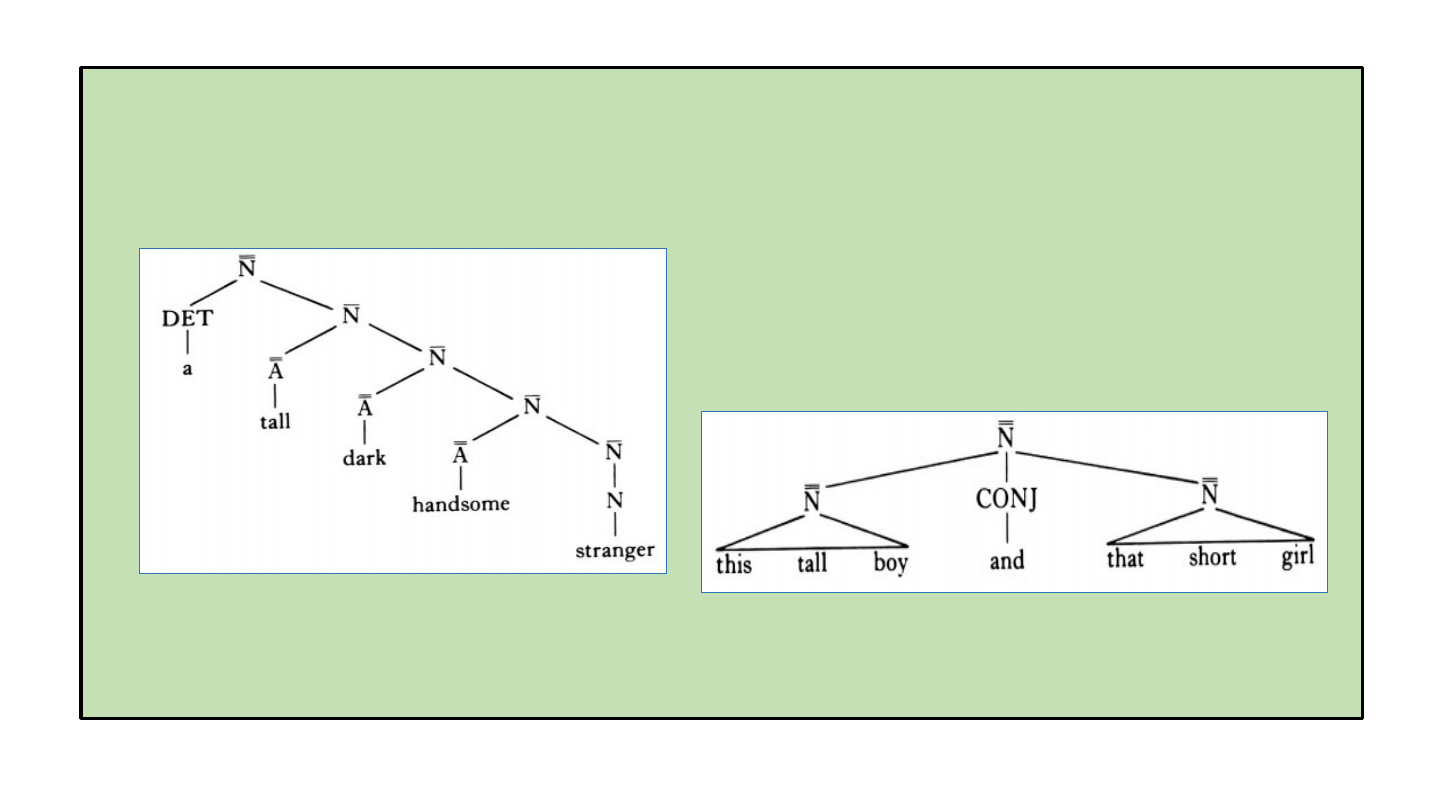
5. Recursion
In syntactic structures, the same categories can be repeated indefinitely.
(1) a tall, dark, handsome stranger (NP category)
→ N’(N-bar) is recursive
(2) this tall boy and that short girl (coordination)
↓
N’’(N-double bar, =NP) is recursive

In addition, Prepositional Phrases (P-double bar, =PP) can be recursive.
(3) out from under the bed (PP category)
P’’ (PP)
p P’’ (PP)
P P’’ (PP)
out P NP
from
under the bed
In the tree of (3), bar node P’ is covert (omitted in the diagram) but it can be regarded that
the bar node is included in the underlying structure.
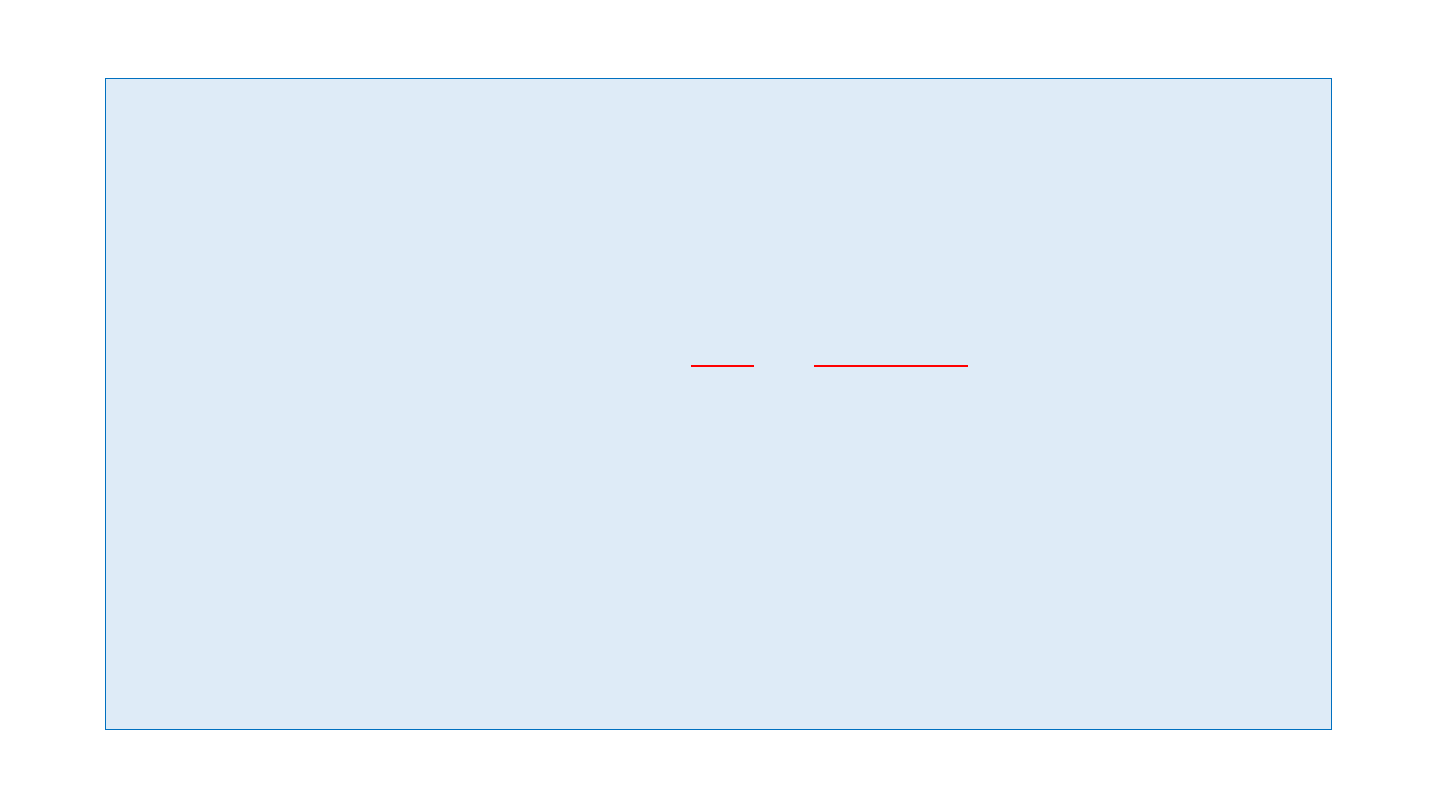
6. Clausal Complement
Nouns, Verbs, Adjectives and Prepositions all permit an immediately follow-
ing
clausal complement (e.g. an indirect question clause introduced by ‘whether’)
Head Complement
(a) the question whether John should leave (N) whether clause
(b) He asked whether John should leave (V) whether clause
(c) curious whether John should leave (A) whether clause
(d) His query is about whether John should leave (P) whether clause
=> Complement is an essential element that provides the head with semantic
interpretation supplementally. So the whether clause is required to its head.
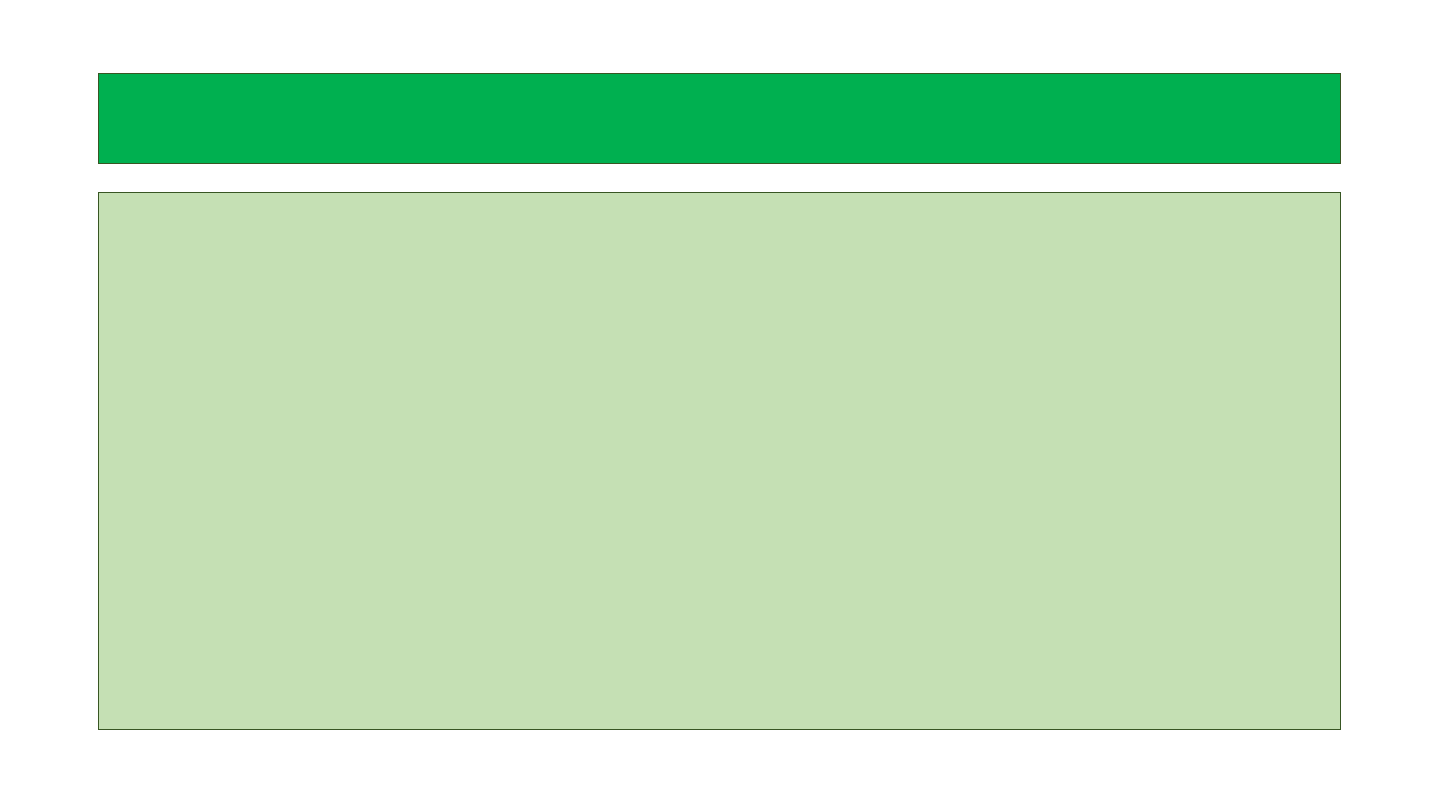
5. Transformations
1. Syntactic Component of a Grammar
The syntactic component of a grammar comprises two components: (i) a Base and
(ii) a Transformational Component.
(i) The Base generates sets of Base Structure(=Underlying Structure, =Deep Structure).
Comprising a set of categorical sentence-formation rules (Phrase Structure Rules, =
P-marker), a Lexicon specifies the syntactic category that each lexical item belongs to
and an appropriate Lexical Insertion Rule.
(ii) Transformational Component contains movement(including insertion) rules in the
process
of the sentence formation.
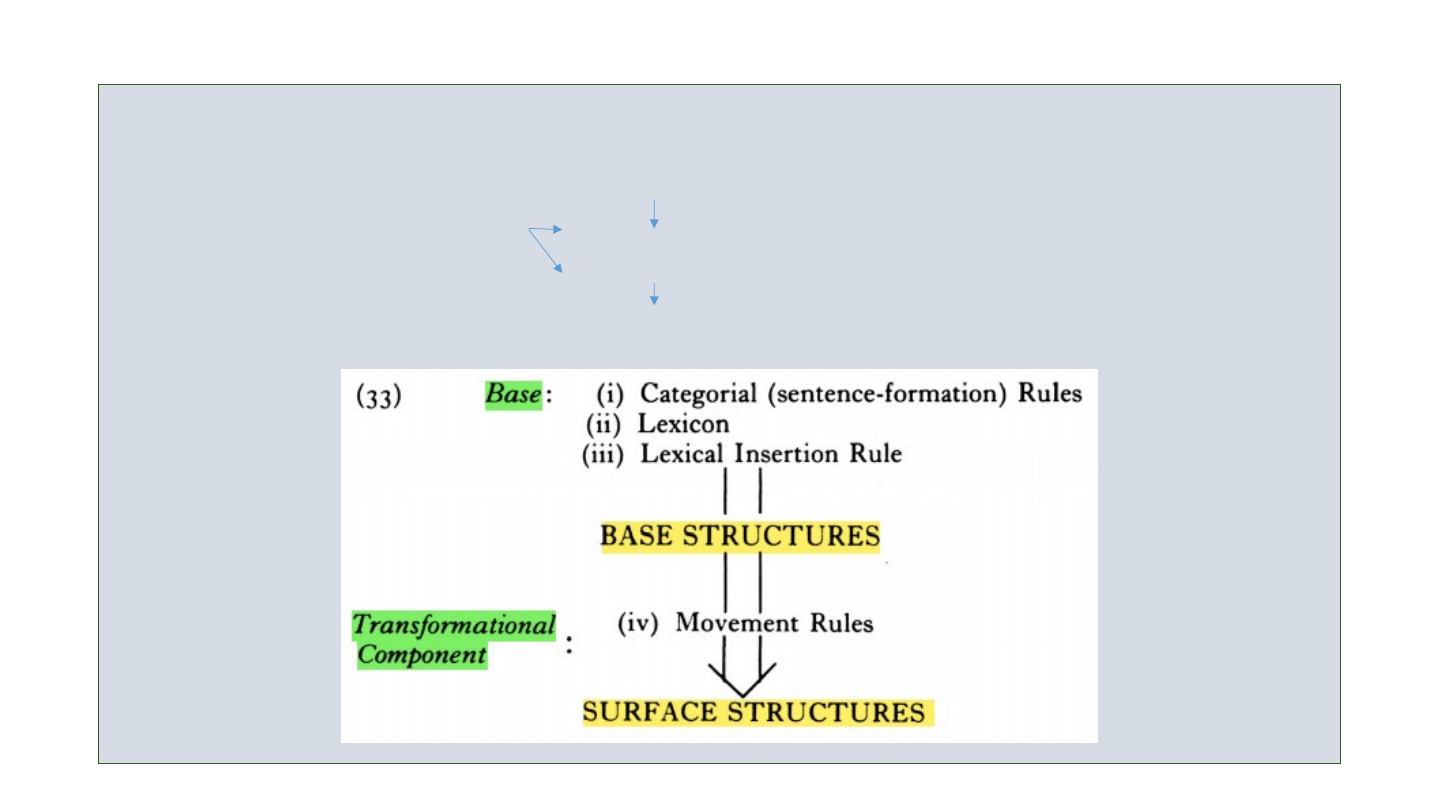
The process of sentence-formation in languages is formatted as in (33):
e.g.) What do you want? => Base structure: You want what
Transformational rules Wh-movement: What you want
Do-insertion: What do you want?
Surface Structure: What do you want?

2. Question types in natural languages
(1) yes-no question and wh-question
① yes-no question: A: Are you going out tonight?
B: Yes / No.
(But other possible answers instead of yes/no: ‘Maybe,’ ‘I don’t think so,’ ‘That’s
right, etc.)
② wh-question: A: Who won the big match?
B: The All-Stars
(2) echo question and nonecho question
① echo question: A: I bought a car
B: You bought a car? ⇒ yes-no echo question
A: I bought a car
B: You bought what? ⇒ wh echo question
② nonecho question: A: Did you buy a car? ⇒ nonecho question
B: Did I buy a car? ⇒ echo question
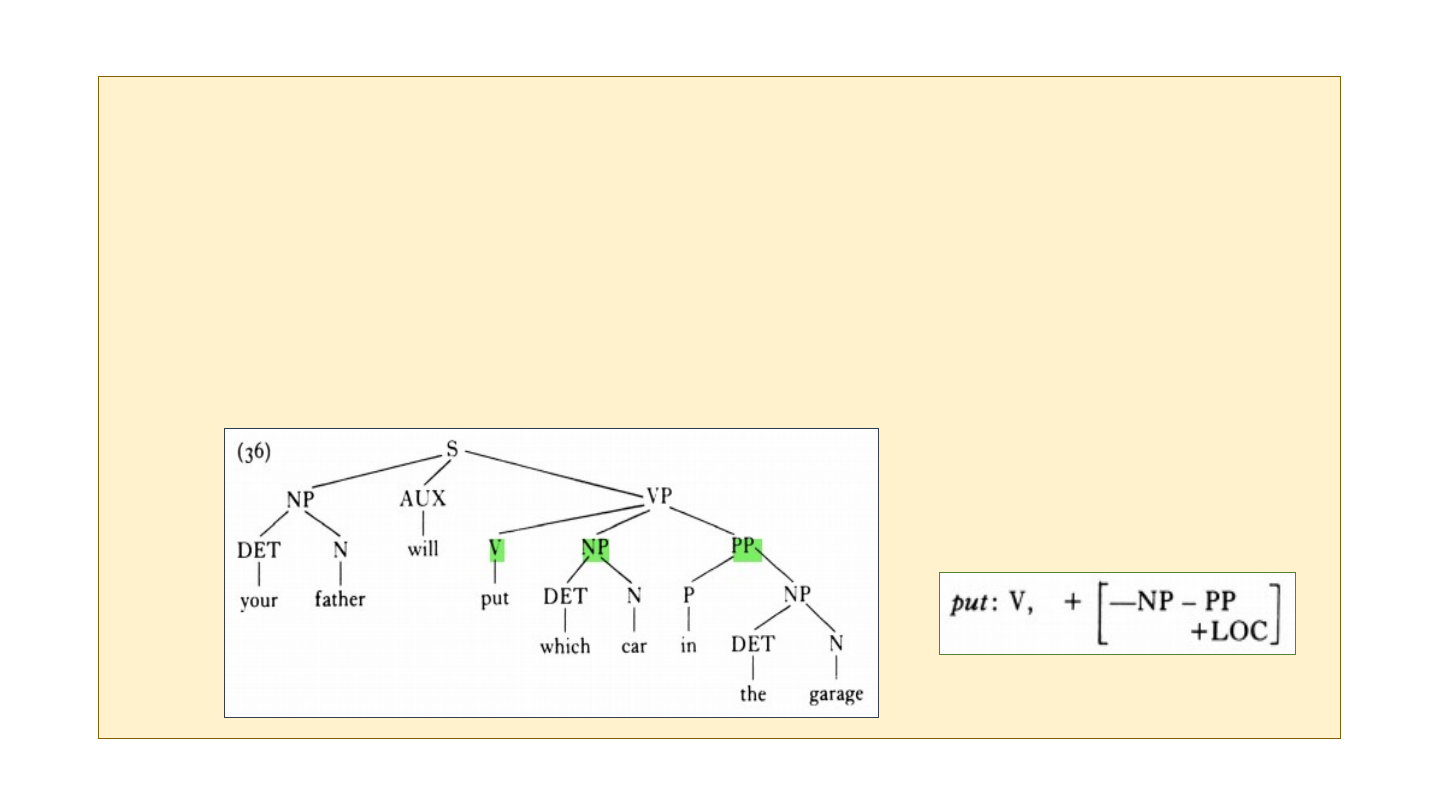
(3) direct question and indirect question
① direct question: When did you get back?
② Indirect question: (a) He asked me who I had talked to
(b) He asked me: ‘What did you talk to?’ ⇒ direct question of (a)
(4) The structure of direct nonecho wh-question
(13) Which car will your father put in the garage?
⇒ Deep structure of (13)
Satisfying the subcategorization
of the verb ‘put’
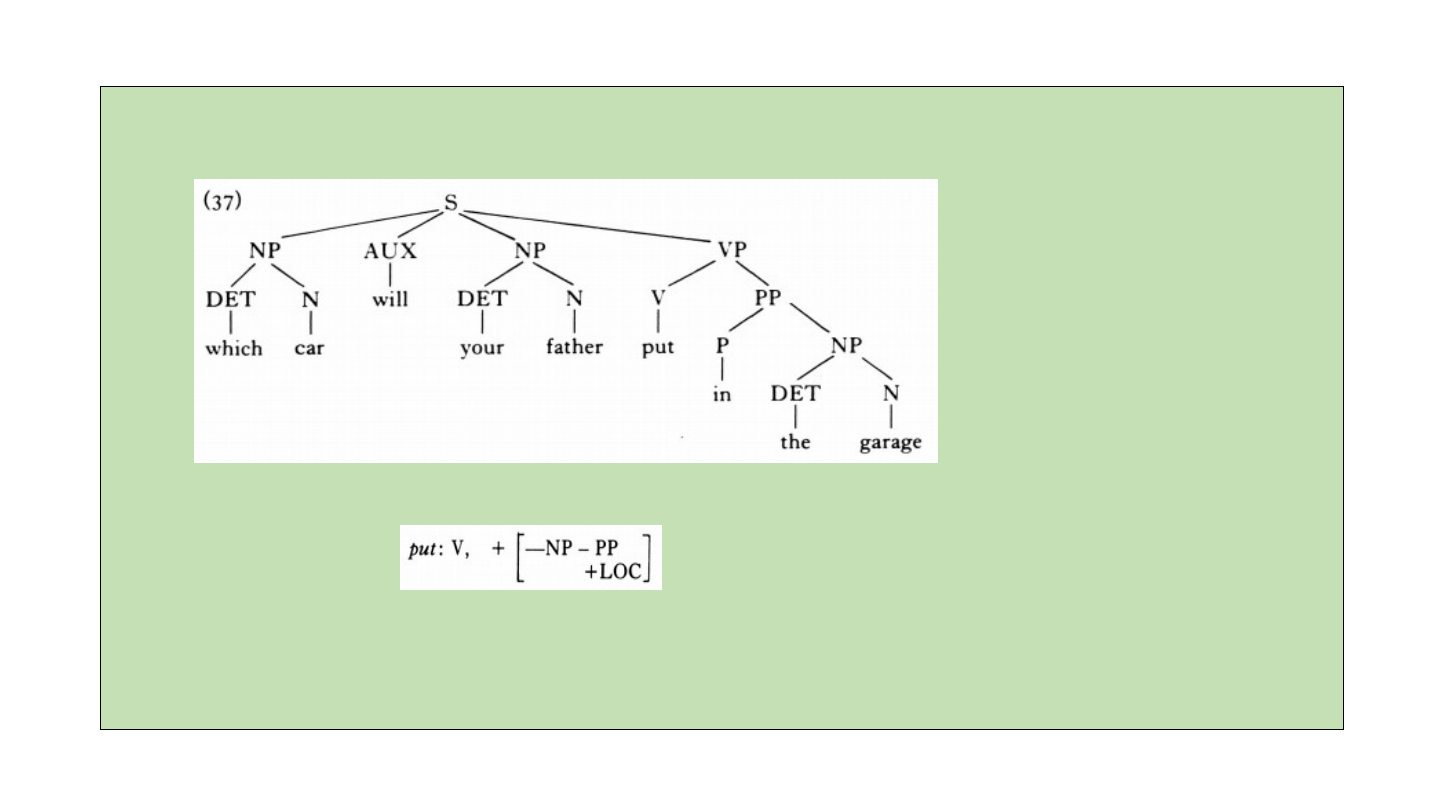
Surface structure of (13) for wh-question ⇒ Wh-Movement
When the ‘which car’ is moved,
the NP ‘your father’ and AUX
‘will’ are inverted. This is NP-
AUX Inversion.
The wh-phrase ‘which car’ is moved to the front of the sentence after the subcategoriza-
tion
of the verb ‘put’ – - is satisfied in the underlying structure.
By applying the PS-rule(sentence-formation rule), an appropriate item ‘put’ is inserted from
the Lexicon under all the proper lexical categories in the underlying(base) structure.